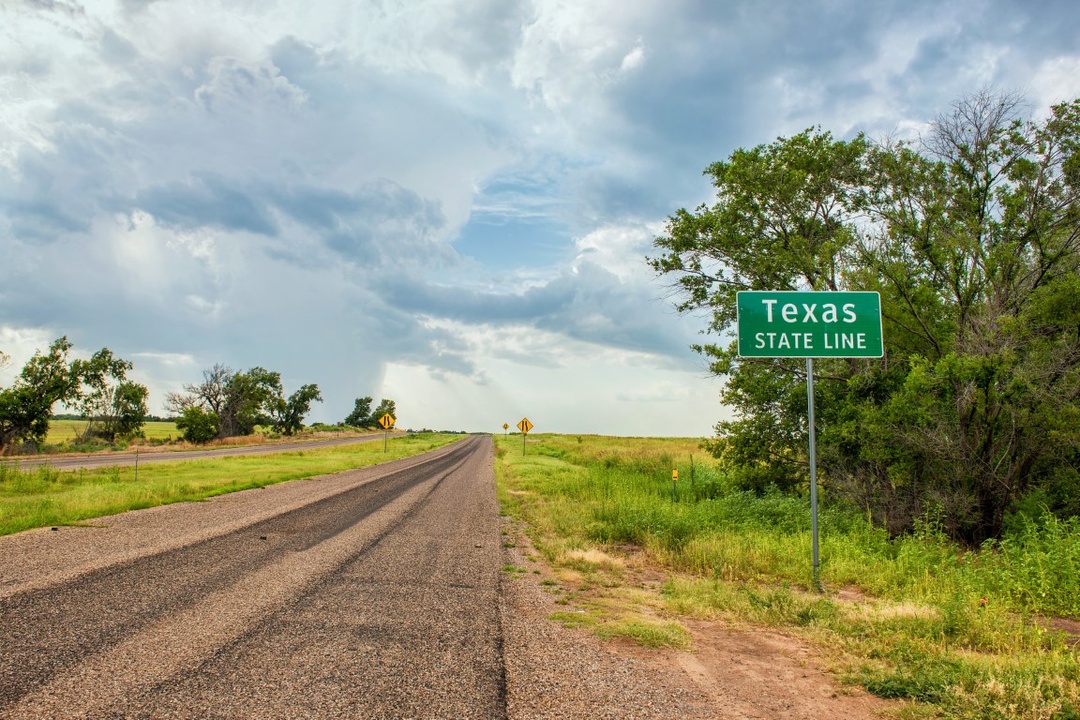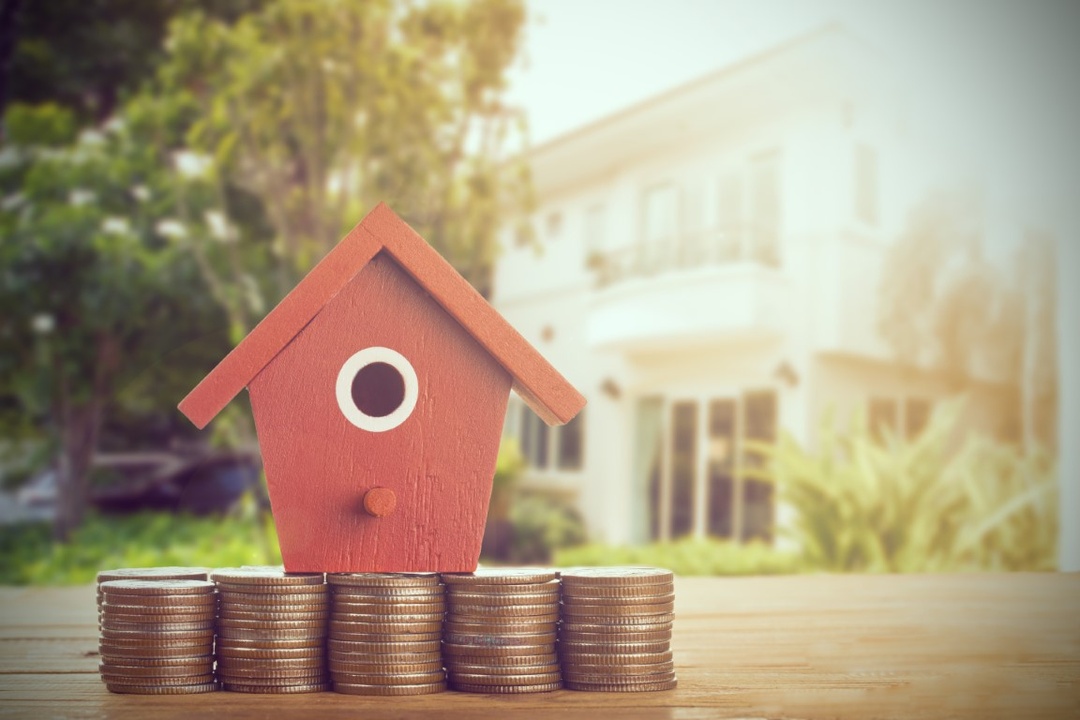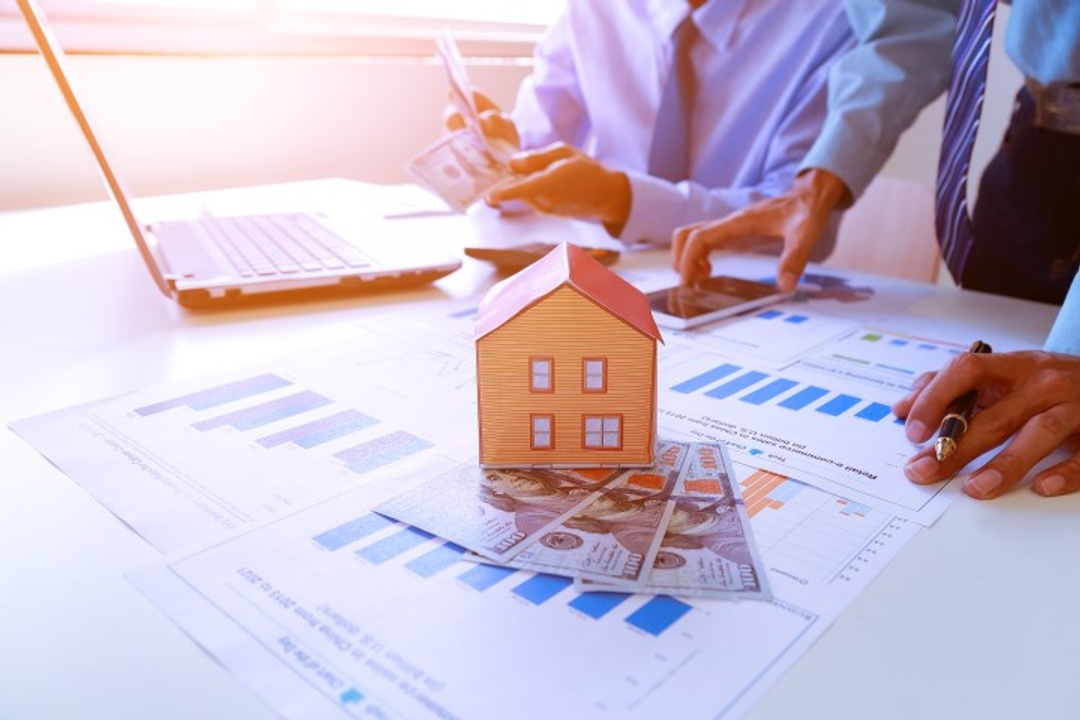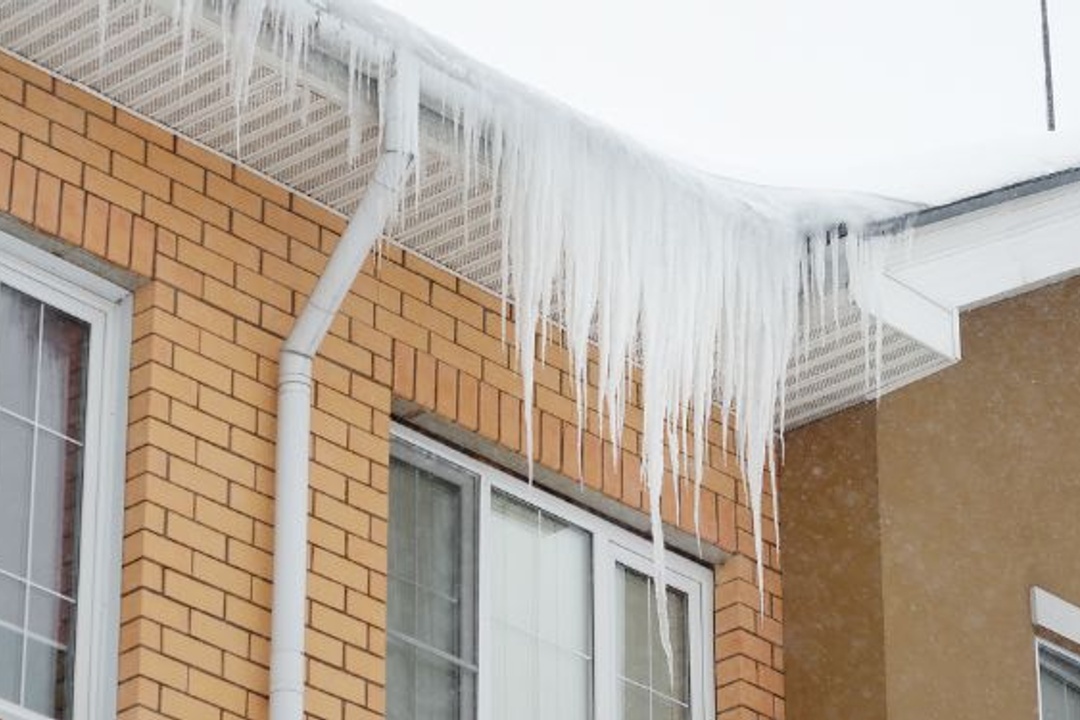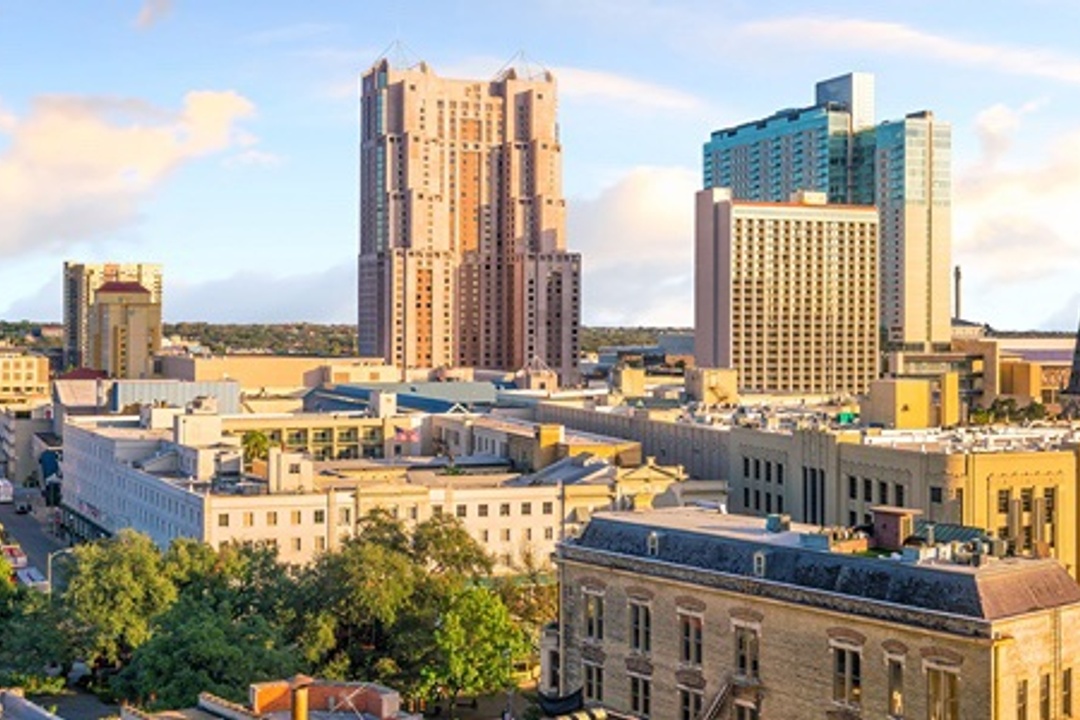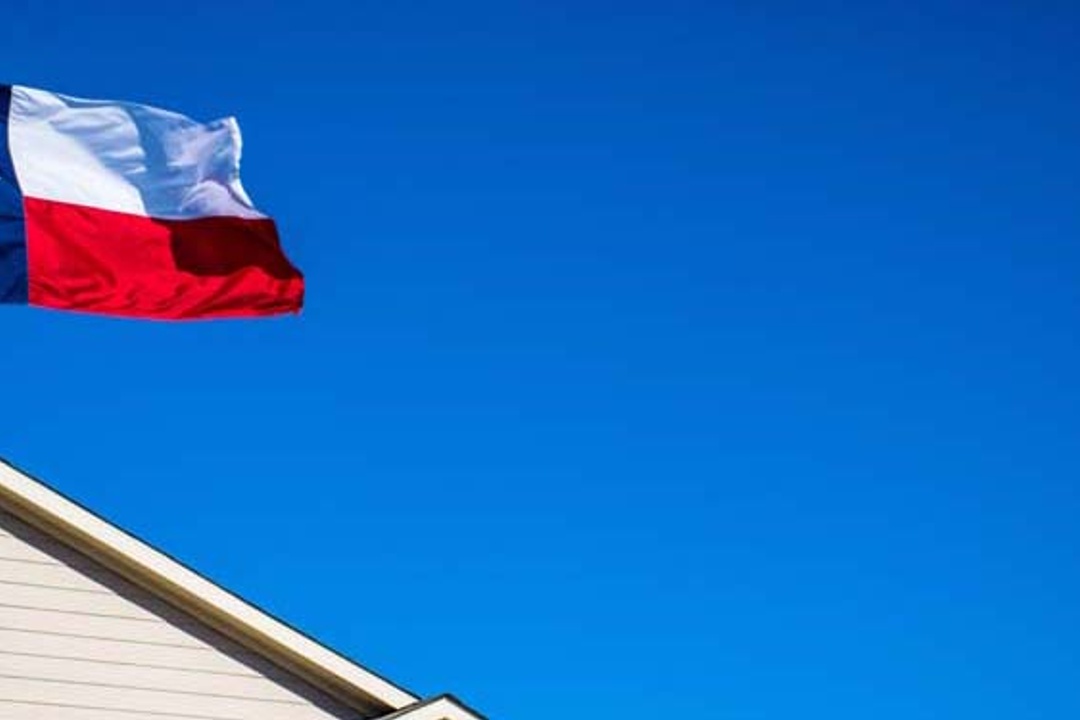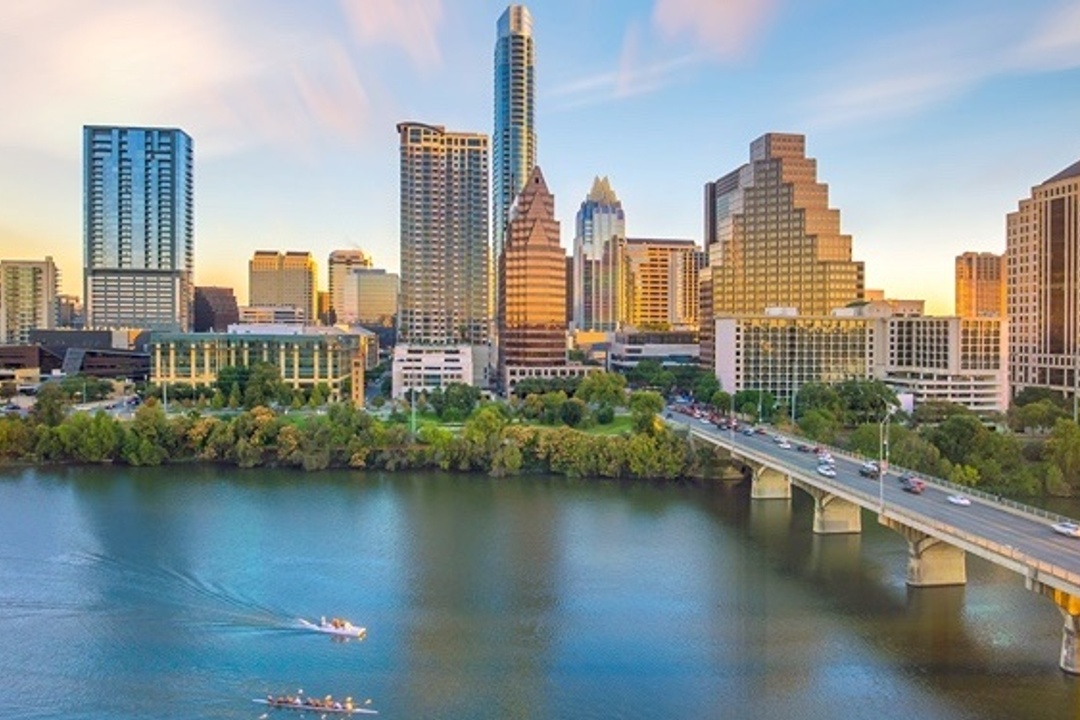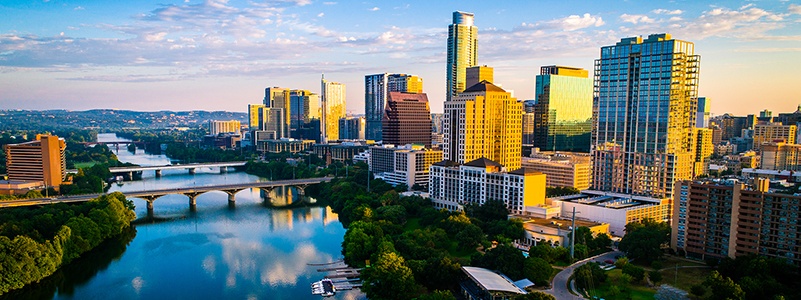
Austin, Texas is a bustling cultural scene ready for exploring. With its lively cafes, fabulous brunch spots, vibrant nightlife, and beautiful scenery, the capital of Texas offers plenty of unforgettable experiences for everyone.
The population of Austin has been exploding, with more and more out-of-staters calling the city home. Although it’s rumored that Californians have been swooping in, there’s actually a lot of people from Florida and New York moving into the ever-growing metro area.
But with the population growing rapidly in the last decade, the question of supply and demand over housing options comes into play. Austin is a less expensive city to live in compared to San Francisco and New York City, which adds to its popularity.
But is Austin still an affordable city to live in? Let’s check out the numbers and find out.

Housing
Austin has become one of the fastest-growing cities in the United States, with many new residents working in the booming tech industry. In fact, the city’s population has been growing by about 145 people a day. With supply comes demand, as well as the rising cost of living.
In the last decade, homebuyers moving to Austin have steadily increased with the immense population growth. In fact, according to a March 2020 Census Bureau report, the Austin metro area grew by 30% from 2010-2019.
However, the number of available homes and apartments is limited in comparison to the large number of new residents moving in. Property listing actually dropped by 72.7% in one year, which correlates with the population growth. Currently, there aren’t enough homes listed for sale to compete with these potential buyers.
So is Austin overall affordable or too expensive? Let’s take a look.

Rent Prices
The average rent in Austin is around $1,437, which is pretty close to the national average renting price of $1,463. However, the rental prices vary with each neighborhood.
The Downtown areas such as Warehouse District and Rainey Street can easily be priced at $2,300 or more. Whereas more affordable rentals can be found in South Austin neighborhoods like Riverside at around $1,300.
Meeting in the middle are East Austin neighborhoods like East Downtown and Windsor Park apartments that are usually in the $1,700 range.
If renting solo sounds overwhelming, Austin is an ideal place to split apartment costs with roommates. Don’t know a soul in Austin? No problem! There’s numerous helpful sites to link you with other people who are also looking for a roommate (or two, or three..).
Check out Roommate Nation, where you can post in their online classifieds and search for your future roommate(s) rather than getting them randomly selected for you. This way, you are in full control of who you choose to share a place with. And you can post your own description of who you are and what kind of living situation you’re looking for, so other potential roomies can easily find you as well.
If Roommate Nation doesn’t interest you, other roommate matching sites such as Circle exist. This app works through your Facebook friends to find mutual friends and friends of friends that you can actually verify. It’s just like a dating app, but for finding roommates!
And don’t worry about storage space issues that might arise from sharing an apartment with other people: there are plenty of self-storage facilities in Austin, and you can rent a unit to keep those belongings that you don’t use on a daily basis.

Purchase Prices
The real estate market also stayed strong with the average sale price of a home rising about 18.4% higher in 2021 than the previous year. Homes in Austin are priced around $454,896, which is twice the national average of $276,717. However, these homes are still considerably less than homes in pricier cities such as San Francisco and New York.
Of course, housing costs tend to be more affordable the farther you get from the center of any city. The most affordable homes in Austin are usually found in North and East Austin, particularly in the suburbs like Cedar Creek and Round Rock. But keep in mind that the property tax rate in Texas is 2.06%, one of the highest in the United States.

Hottest Neighborhoods
Downtown Austin is the place to be if you’re looking for bar-hopping, live music, museums, and plenty of spots to eat out at. Known for its lively activity, you’re sure to find something new to experience around every corner. Check out a few of the most popular areas to live in below.
Rainey Street: Popular among 20-somethings, Rainey Street is the life of the party. With its rows of quirky bungalows remodeled into bars and restaurants, it’s truly one of the more unique places to live in Austin. If you’re up for late nights on one of the most entertaining streets Downtown, Rainey won’t disappoint.
Wells Branch: Not only is Wells Branch where you can find a great deal on a home as a first-time buyer, but it’s also a great place to raise a family. This neighborhood is 15 miles north of Downtown Austin, so it’s a convenient spot if you want the best of both worlds. Even though this area is in the suburbs, there’s plenty to do with the biking and hiking trails nearby. Plus, locals recommend it as a safe and quiet community, so it’s no wonder why it’s a popular area to buy a home.
Brushy Creek: This neighborhood is also north of Austin and is known for its access to excellent education options. Being home to the Round Rock Independent School District, families can find a great selection of highly-rated schools close to home. It’s also close to the booming tech scene with offices for Dell, Inc. nearby. Brushy Creek has a small-town feel but has a lot to offer with its walkable downtown area featuring shopping, cafés, and restaurants.
Mueller: This North Austin neighborhood is up and coming for growing families and young professionals. If you’re looking for a unique place to call home, this community focuses on being eco-conscious by using recyclable, non-toxic materials in its home designs. In fact, Austin Energy built a power plant on-site that set requirements to ensure environmentally-friendly buildings in the area. This could also result in lower utility bills, so it really does pay to be eco-conscious! The community also has a variety of food in its restaurants from Southern comfort and classic Chinese meals to hit the spot.

Up and Coming Neighborhoods
These neighborhoods located throughout North, South, and East Austin are up-and-coming hot spots for new Austinites. North and South Austin offer more residential areas that are quieter and more refined than their nightlife counterparts.
These neighborhoods are more affordable because they’re away from the popular bar hotspots. The vibe in East Austin varies but is much trendier the closer you get to Downtown. Plus, you’ve got some sweet cafes to check out!
The Domain: Nicknamed Austin’s “second Downtown” due to its collection of shops, restaurants, and bars that contribute to its nightlife, this neighborhood offers a balanced life and work atmosphere. In fact, many of the building floors above the shops are apartments! So what else makes The Domain up-and-coming if it’s a more relaxed environment? The booming tech industry moving in! If you love the convenience of living near local amenities without breaking the bank, this is the place to check out for your next living situation. Plus, if you work in tech you could avoid the busy commute to the office!
Windsor Park: This neighborhood will bring out the adventurer in you with its hidden gems waiting to be discovered. It’s another great choice if you’re looking for a quieter place that still has personality. Looking for a dog-friendly bar? Check out Haymaker for a refresher after a long day at the dog park. This area originally gained popularity for its more affordable housing, but prices have risen as the area has grown in popularity. Another thing to note– the homes tend to be older and a bit outdated. The best part is that you’re 15 minutes away from Downtown!
South Manchaca: Another neighborhood within a short distance of Downtown, South Manchaca offers ranch-style homes and the streets are lined with trees. If you’d rather not get caught in a crowd during tourist season, this area is a great place to call home. Similar to Windsor Park homes, you won’t get the fanciest living situation with all the bells and whistles, but if you prefer a simpler place, this could be the perfect area for you. You can check out the local restaurants, parks, and Central Market for most of your nearby entertainment.
Allandale: You might think that a lowkey neighborhood wouldn’t be so up-and-coming, but Allandale’s chill atmosphere is in demand for people who need to get away from the hustle and bustle. This is the place to live if you’re looking for a house, but the apartments are also a nice choice. Being a popular area for homes, there are a lot of families who live here. So if you’re wanting to get away from the loud bars, this is where you want to be. However, that doesn’t mean that you’re in the middle of nowhere! There are several nice shops and eateries like Epicerie, where you can hang out for a French-inspired brunch.

Affordable Neighborhoods
South, East, and Southwest Austin offer some of the most affordable neighborhoods. Whether you’re looking for an apartment or you’re a first-time homebuyer, these areas are sure to please your bank account. And you’ll get the benefit of a quieter area with full access to all of the city life you’d like at any time.
Riverside: One of the most affordable living areas in Austin, it’s also where you’ll find a younger vibe. If you’re okay with not being close to the latest and greatest attractions, Riverside is a good option. East Riverside is known for its entertainment value in its diverse restaurants, inexpensive shopping, music venues, and even direct access to the boardwalk at Lady Bird Lake. Older homes in this area can average around $300,000, but more recently constructed homes can be double the price at $436,500. But you’d live close by to the airport and who can beat that? So if you’re looking for some affordability, this would be the place to check out.
Saint Elmo: Right in the heart of South Austin, this neighborhood is relatively affordable for first-time homebuyers. You can find homes for about $400,000-$500,000, which is actually a lot less than the homes not too far north. You’ll be close to South Congress, a sought-after area of breweries, a quick ride into Downtown, and one of the cutest neighborhoods to take a nice stroll through. And there’s the St. Elmo Public Market, a large retail marketplace with amazing foodie finds. It’s a unique market that you really shouldn’t miss!
Manor: If you’re looking for a price point similar to what you’d find a decade ago, definitely consider the Manor neighborhood. The average price of homes in this area is around $332,000 and they are diverse in style. From renovated ranches to more modernized builds, you may just find your forever home here. It’s close to Windsor Park, which was previously mentioned as an affordable neighborhood to live in. Plus, the return on investment in the future will be worth it as the neighborhood continues to grow.
Tanglewood Forest: This may be an older South Austin community, but Tanglewood Forest definitely has its charm! Located south of Slaughter, this neighborhood offers nice wide streets lined with trees and even some extra space between houses. Because the homes in Tanglewood Forest were built between 1982 and 1996, the properties here tend to be larger than newer property lots. Plus, there’s a beautiful duck pond and park with plenty of green space in the back of some of the homes. This is an ideal place to raise a family if you prefer a quieter neighborhood, more affordable housing, and more outdoor space!

Utility Costs
Living in Texas in general demands air conditioning for those hot and humid summers, but there are other utilities to keep in mind. The average cost for gas, electricity, water, and garbage pickup is about $146 per month.
Yearly, that would cost up to $1,752, which might sound like a lot but it’s actually 15% less costly than the national average of $2,060 per year. Plus, internet service in Texas usually costs around $62 per month, which is less expensive than other internet services that can easily be a monthly cost of over $100.

Transit Costs
Although Austin isn’t a completely walkable city, it is ranked as the 29th most walkable city in the United States. With a walk score of 41, you can easily make your way around Downtown by walking, using a bike share, or by bike taxi. If you’re trying to get to another neighborhood, it’s best to take a car, taxi, or Uber.
In fact, most Austin residents commute by car with 83% driving alone or carpooling, whereas people getting around by public transit, walking, and bicycling only make up for 9% of transit.
Because a car is the most functional way to get around Austin, that means there are a lot of people pumping gas. Since late 2019, gas prices in the city have fluctuated between $2.37 per gallon and $1.45 per gallon. Which makes Austin gas prices about 40 cents cheaper per gallon than the national average.
Alternatives to Car Ownership
But if owning a car in the city isn’t your thing, you do have public transit through Capital Metro. They’ve got buses and a commuter train that runs from Downtown to the far northwestern part of Austin. The cost for one person on the buses costs $1.50, but you also have the option to buy a day pass for $2.50.
Although you’ve got the rideshare options as well, it’s going to cost you more. Because Austin is more spread out, a single car ride from a neighborhood farther away from the city center could cost you up to $30.

Food Costs
Due to its booming foodie culture, dining out in Austin won’t exactly be cheap depending on where you go. A typical meal at an inexpensive restaurant can cost one person around $15.00.
If you want cheap, head to the food trucks and pop-up eateries for about $5-7 per person. A three-course meal for two people at an average restaurant usually costs up to $50.00, but it can certainly go higher.
Grocery Costs
Because dining out will get pricey, you’ve got to consider saving your paycheck for the grocery store. With the basic staples like milk, bread, cheese, meat, and eggs costing about $18.32 altogether, the average grocery bill in Austin is actually 11% less expensive than the national average of about $372 per month. You can expect to pay about $302.12 on your monthly trip.

Entertainment Costs
The entertainment value in Austin is more affordable than in other major cities such as New York City, especially when going out to the bars. The average cost of grabbing a single beer at a bar in Austin is about $4.35, compared to the NYC average of $7.75.
There are plenty of activities and excursions to take part in and around Austin. You can check out the Austin and Hill Country Sightseeing Tour and view the city from afar by kayak on Lady Bird Lake. You can also let loose on an adventurous tour of Austin’s breweries and explore Hill Country with their Wine & Appetizer Experience.
On a budget? There are plenty of free things to do in Austin such as walking the greenbelt or taking a hike on some of the beautiful nature trails. Plus, exploring the city with your own walking tour is completely free! But you will stop for coffee at least twice at one of the many unique cafes in Austin.

Salaries in Austin
On average, the hourly wage in Austin is $26.53 which makes about $55,182 per year. The hourly wages for Austin are a bit higher compared to the national average of $25.72. The minimum wage matches the federal minimum at $7.25 an hour.
If you work in tech, you’ll definitely make more on average in Austin than in other cities in Texas. This is due to the City of Austin and the University of Austin being major employers for future tech workers. The city also has a prosperous service industry, so you don’t have to work in tech to afford to live there.
Living in Austin on a $30-50k salary is much more doable compared to other popular cities such as San Francisco and New York City. It’s easier to comfortably make a living in Austin than in other major cities. That’s why so many people are finding their new home in Austin from cities in California, New York, and Florida just to name a few.
Buying a home in Austin gives you more selection of the kind of neighborhood vibe you’re going for. Whether you want to be where the action is every night or you want the ability to retreat back to your quiet suburban paradise, you’ve got lots of housing options in Austin.
If you’re looking to make the move to Austin, search homes for sale or feel free to browse Austin neighborhoods!

